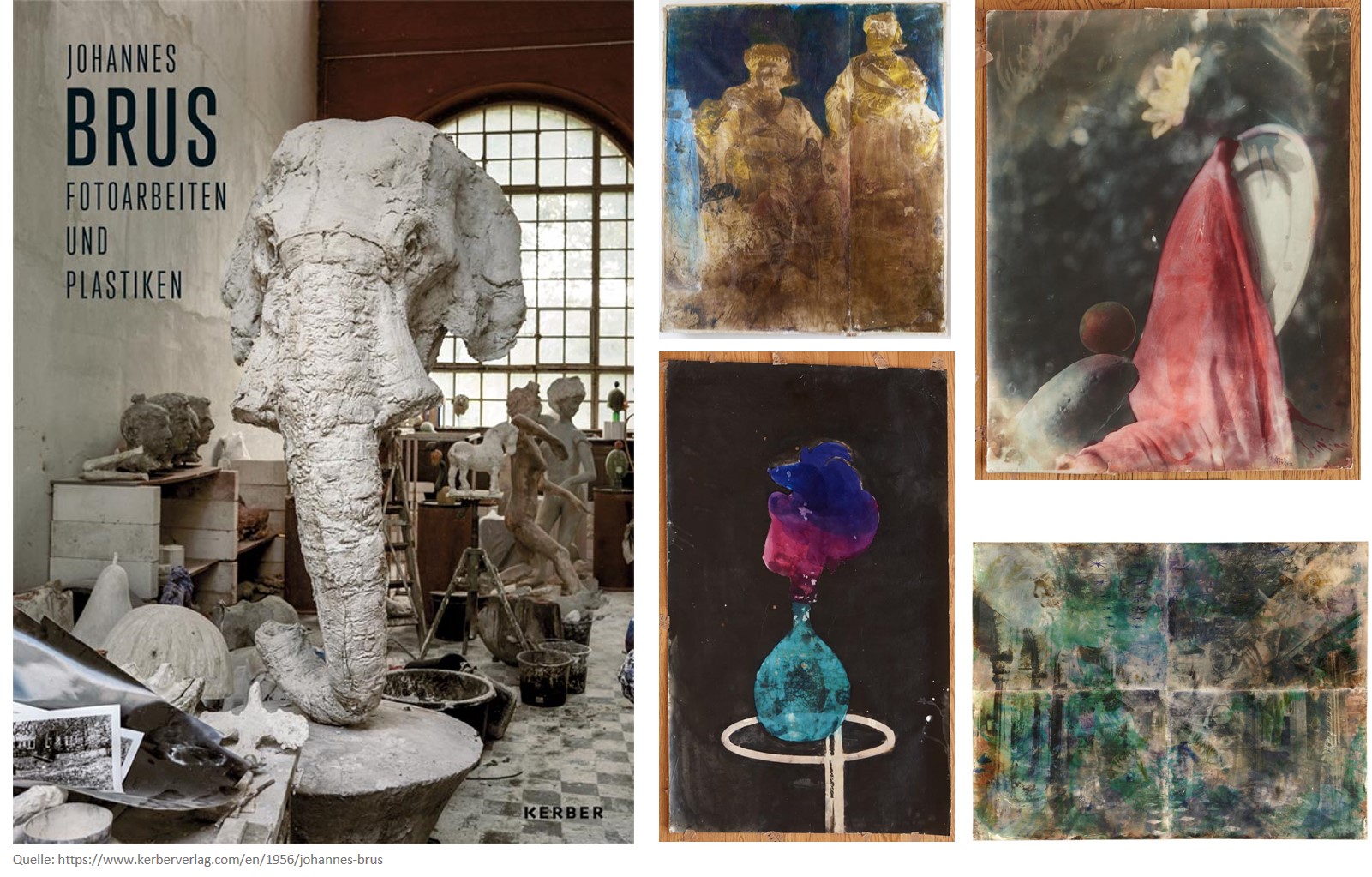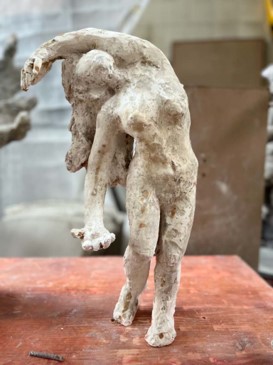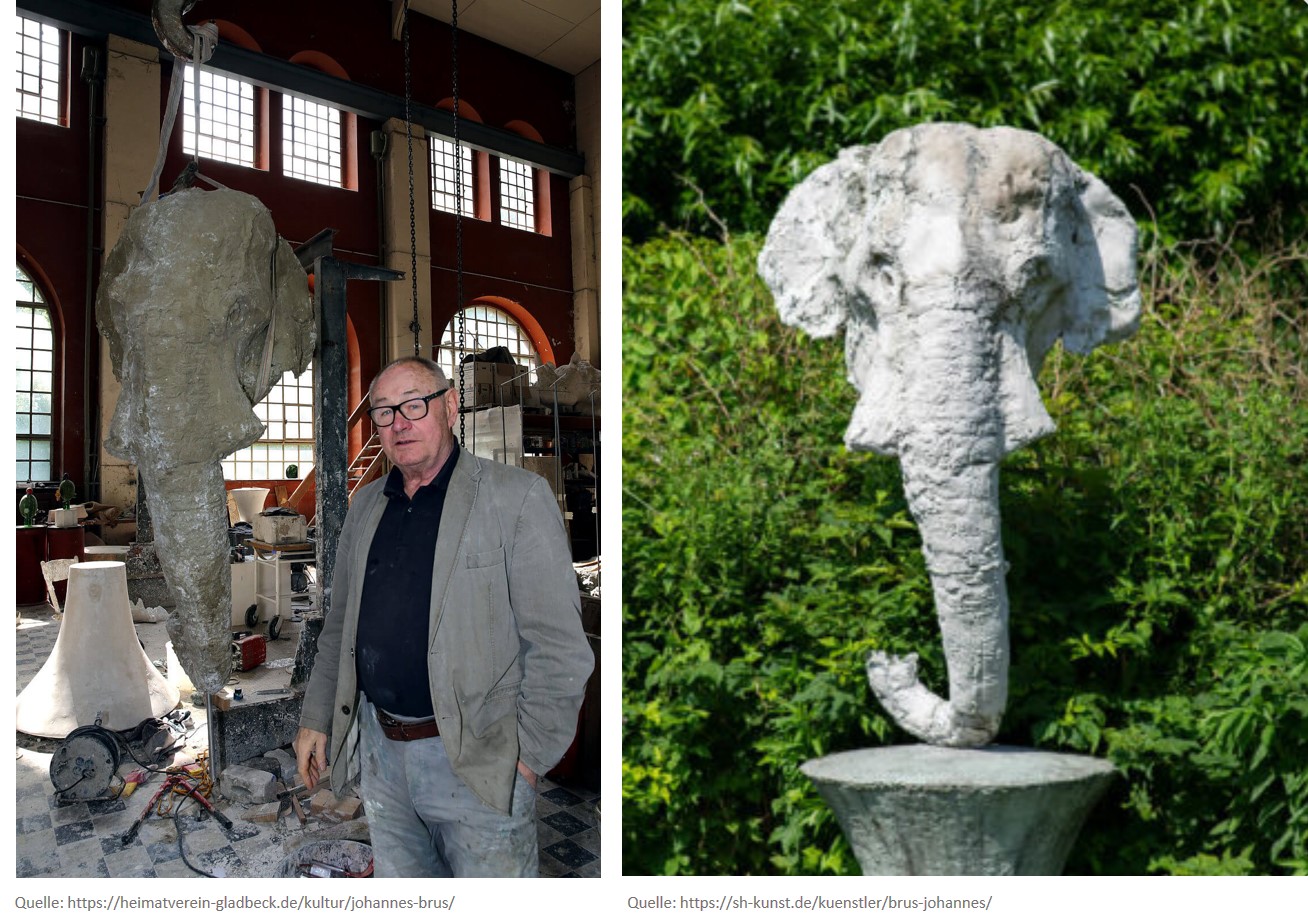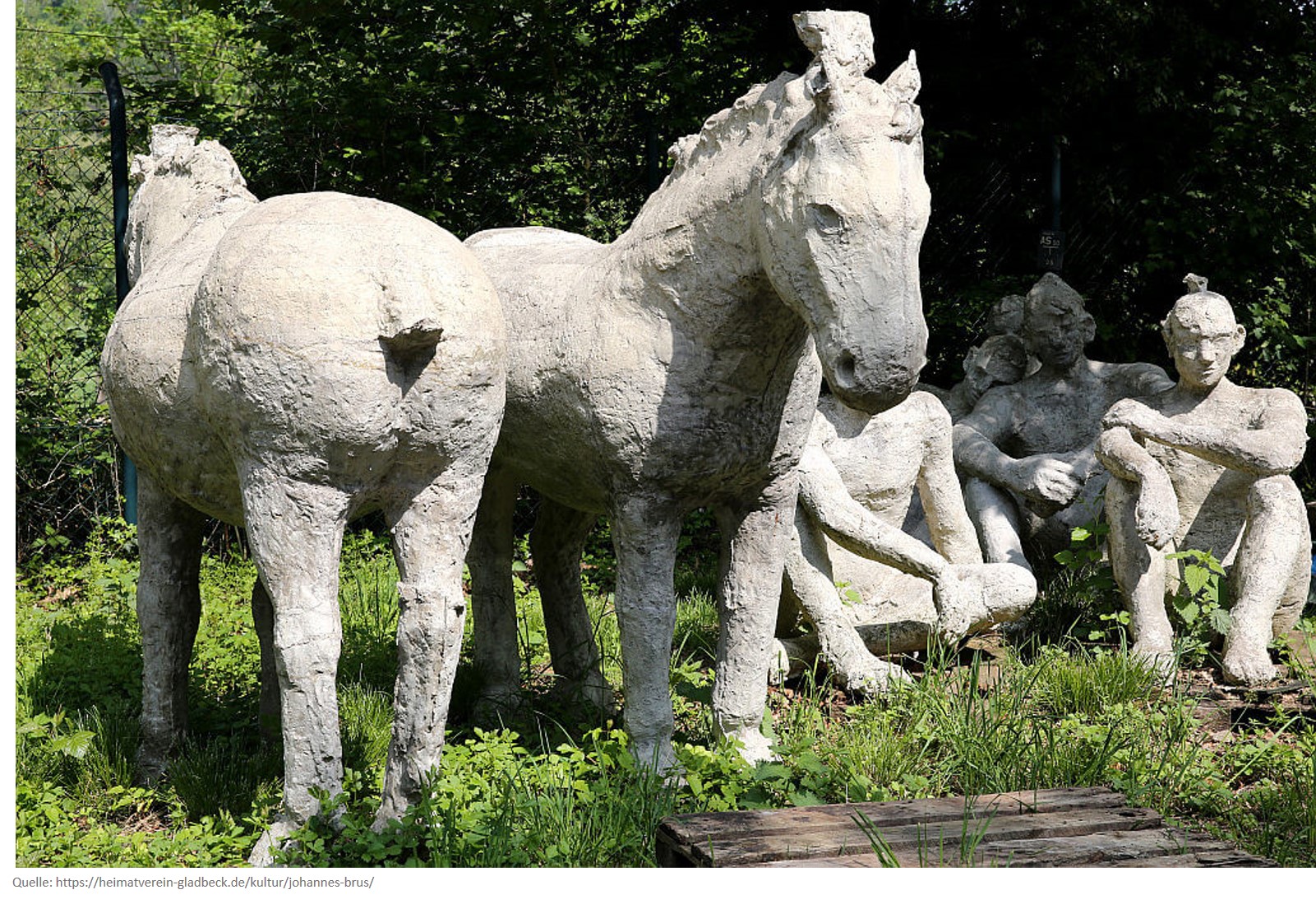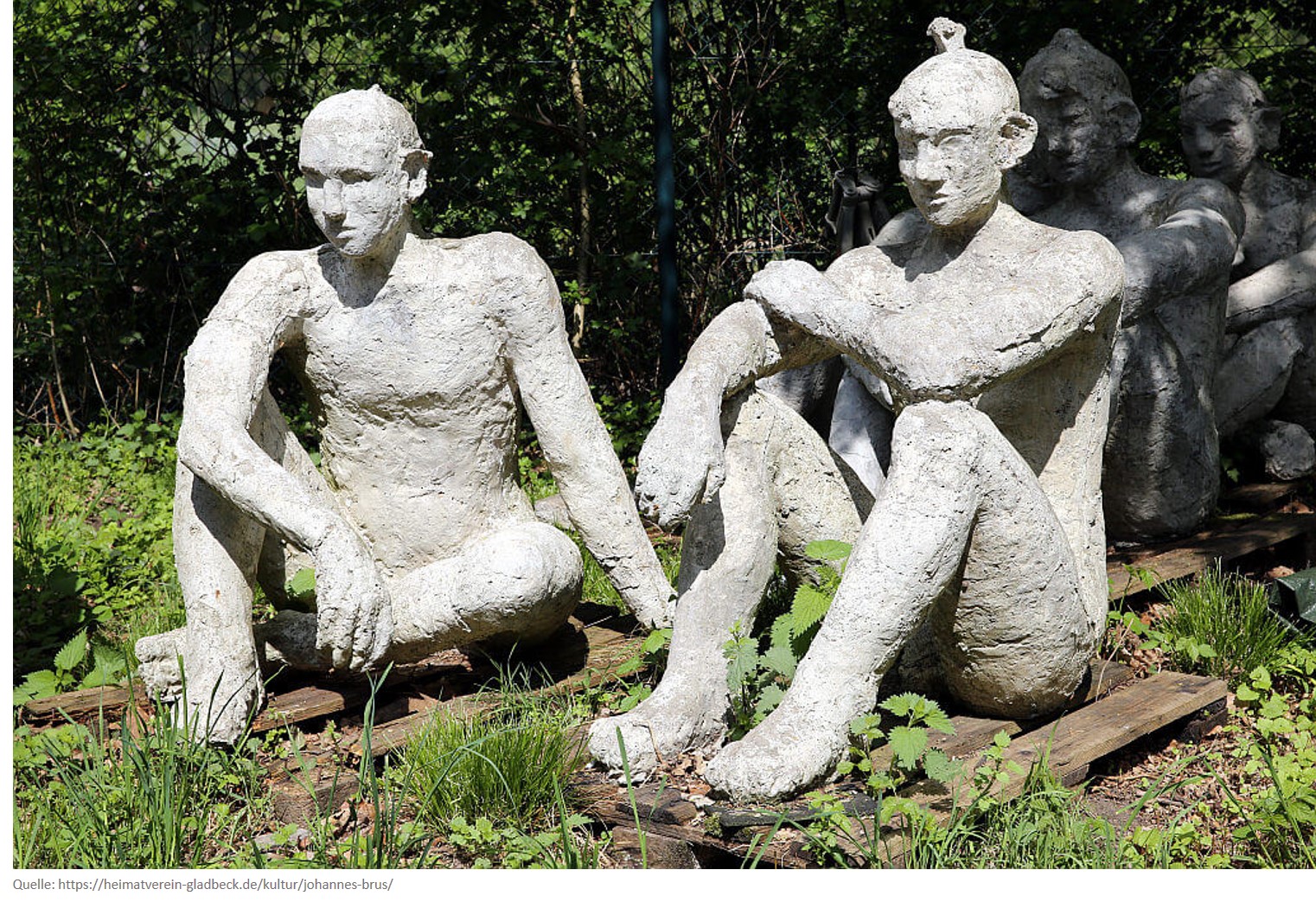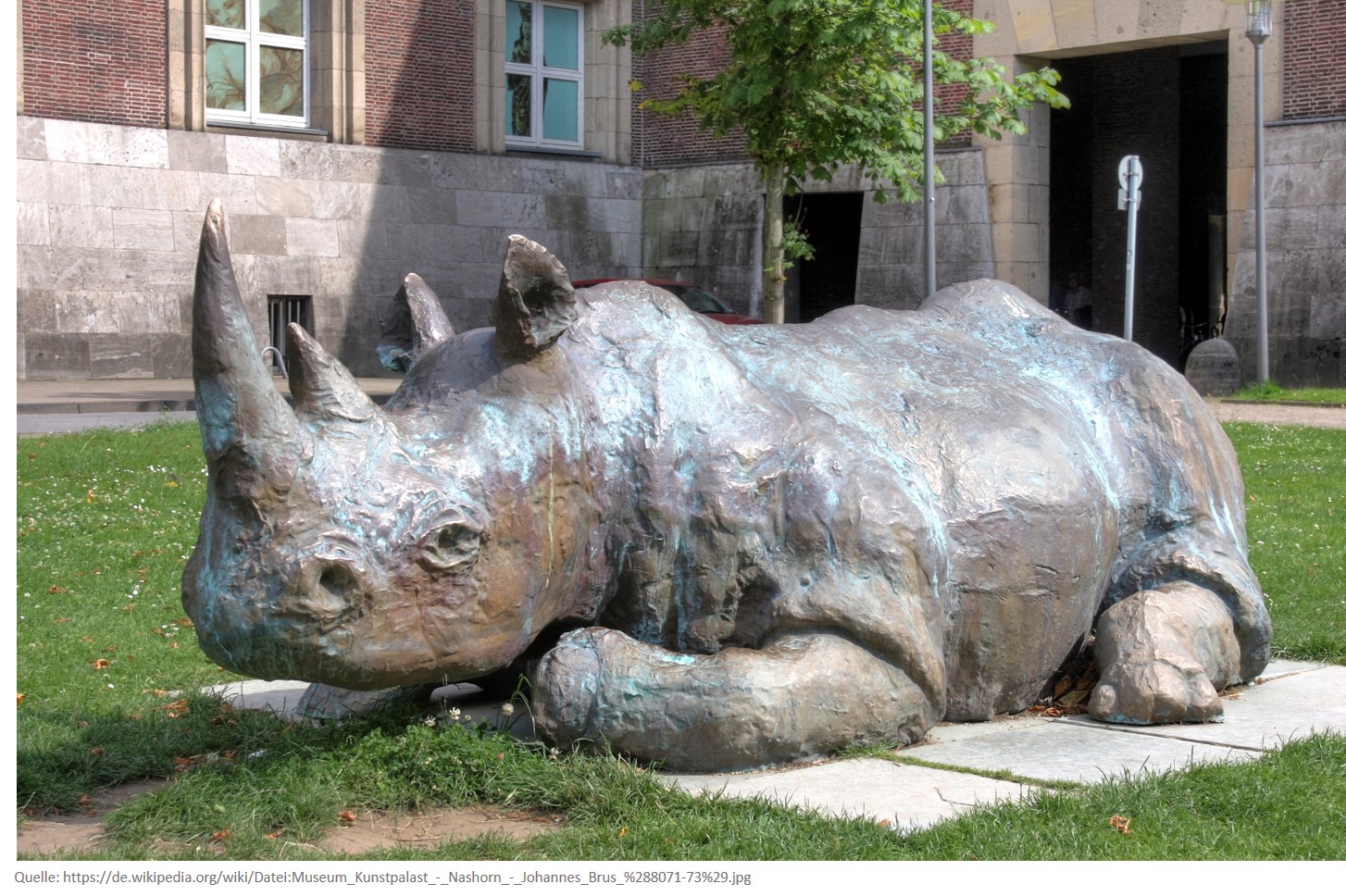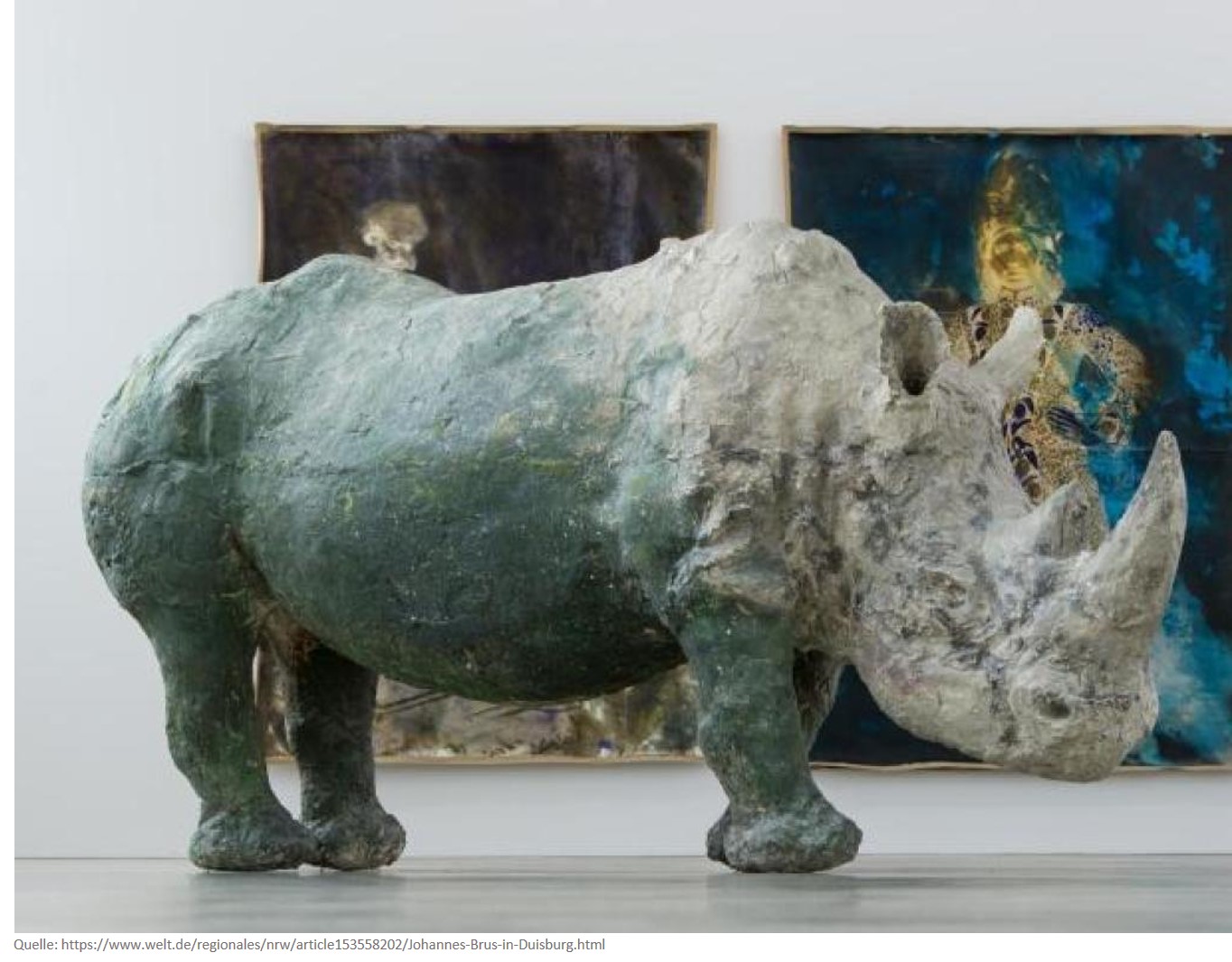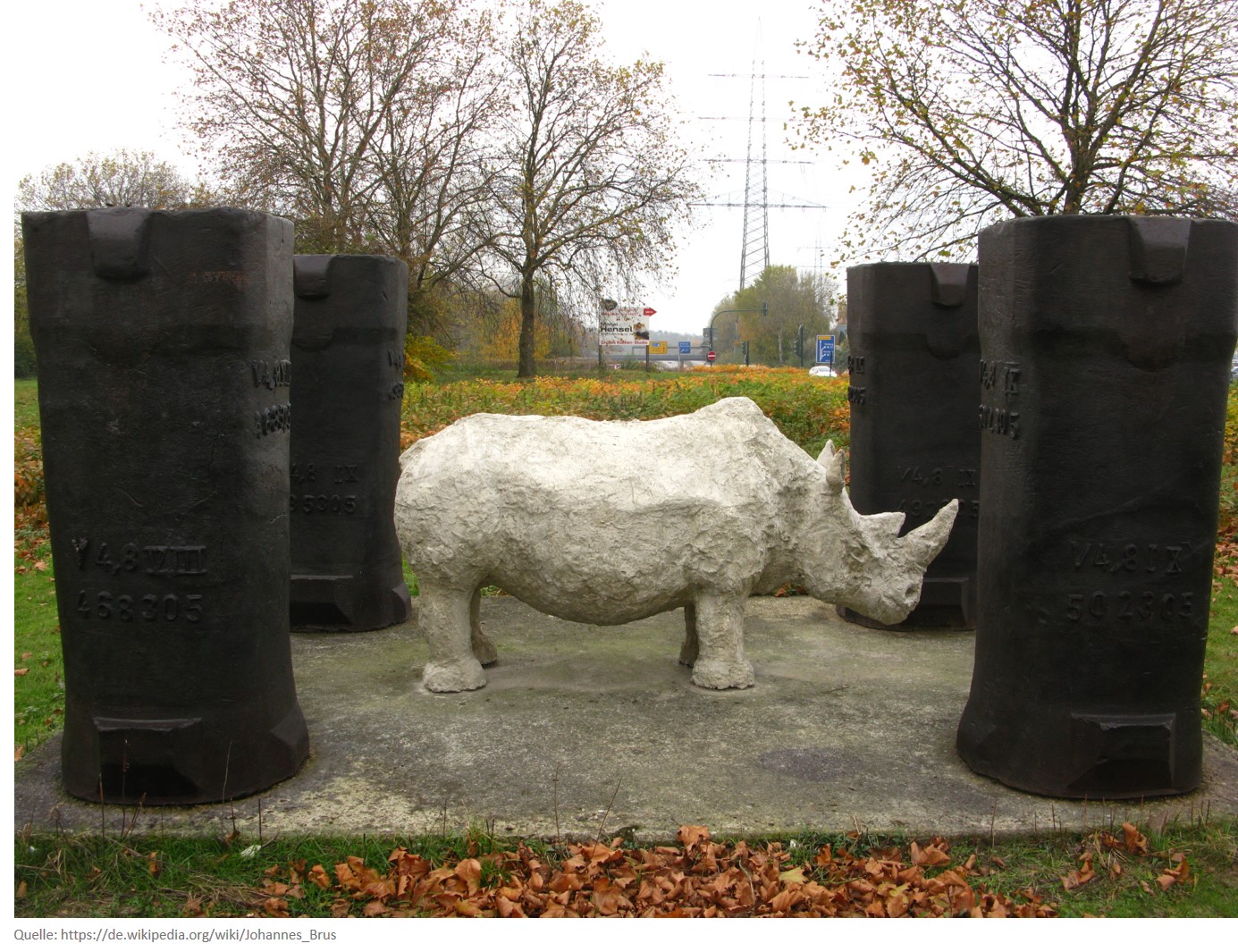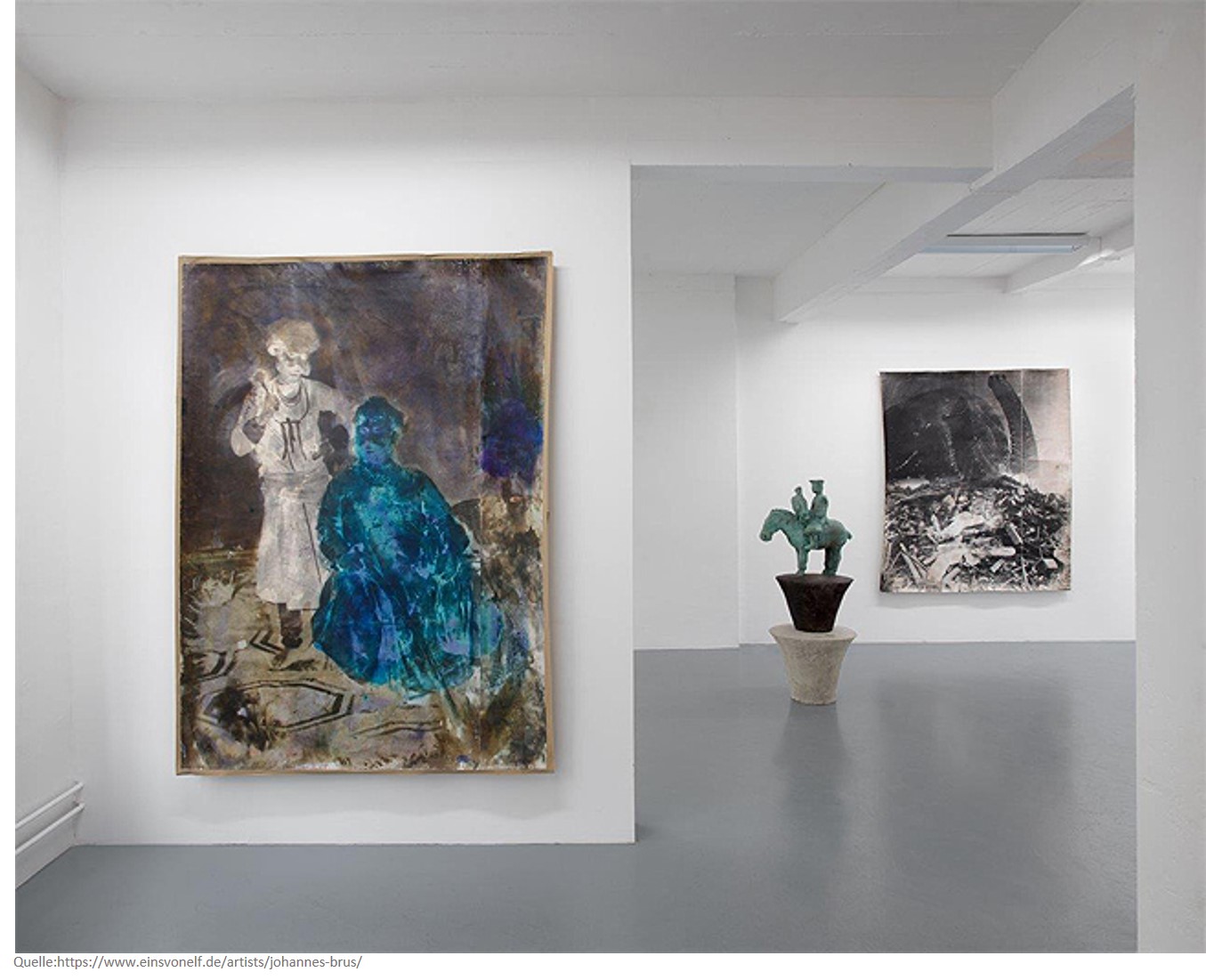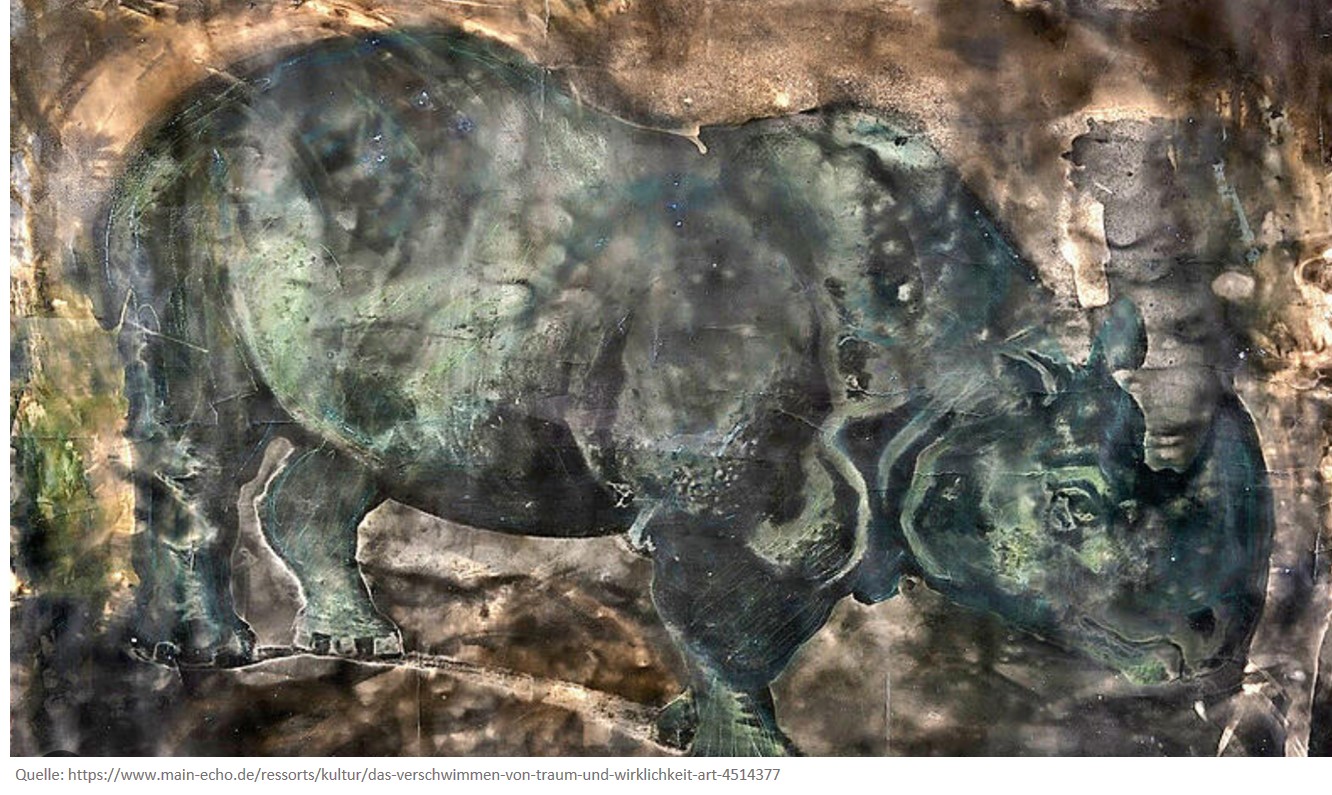Johannes Brus was born in Gelsenkirchen in 1942. From 1964 to 1971 he studied sculpture at the State Academy of Art in Düsseldorf and was a master student of the sculptor Prof. Karl Bobek. During these years at the art academy he also experienced the revolutionary period shaped by Joseph Beuys. In 1979 he received the art prize of the Villa Romana in Florence. From 1986 to 2007 he was a professor at the Braunschweig Academy of Fine Arts; his students included Katharina Grosse, Karin Kneffel, Mathias Brock and Tim Berresheim.
Numerous trips to various countries in Europe, Africa and Asia influenced his work. However, Prof. Brus is particularly connected to the Ruhr area. He lives and works in the south of Essen. His impressive artist’s studio is the former Krupp waterworks of Villa Hügel in the Ruhr Valley between Werden and Kettwig.
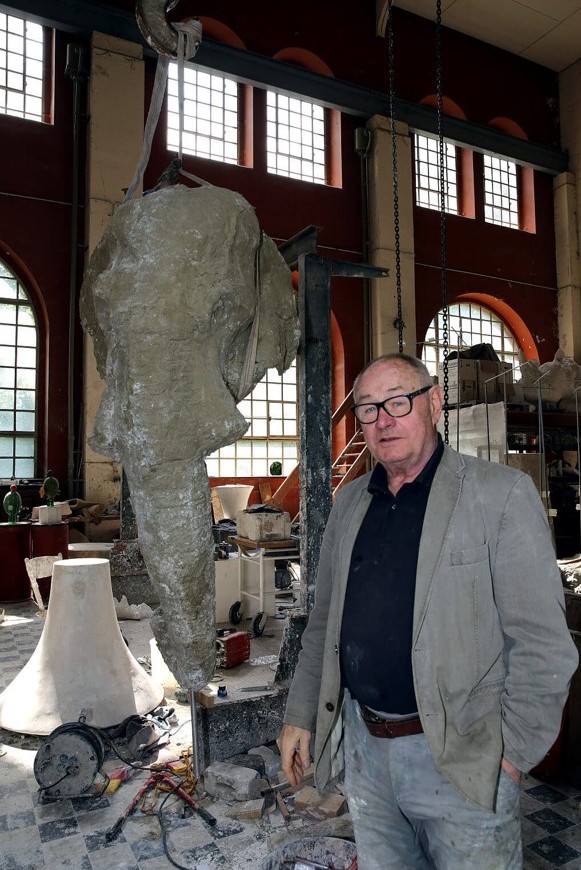
Foto: Ursula Kaufmann
Prof. Brus works primarily as a sculptor and as a photographer. He experiments with different techniques, with which he explodes the conventions of the respective genre. Many of his works are characterized by an idiosyncratic humor. Brus addresses aspects of cultural memory and the functions of images.
As a sculptor, Johannes Brus works primarily with concrete, occasionally also with other materials such as plaster, bronze or silicone. His works are often realistic, roughly worked large sculptures that impress the viewer. But miniatures can also be found among the sculptures. Frequently recurring are the animal motifs of the eagle, the (blue) horse, the elephant and the rhinoceros. Brus is interested in the physicality of his sculptures, the power and mass of the works. The manufacturing process is deliberately not hidden. Often fingerprints, traces of machining and cast seams are still clearly visible.
His photographic works with their mostly large-format, dazzlingly colored picture surfaces are the result of a special design and alienation through multiple exposures, overexposures, chemical processing and coloration. His pictures have nothing in common with familiar photographic images. Rather, they are diametrically opposed to “perfect” documentary photography. His works sometimes seem surreal-mystical and archaic, sometimes they are humorous confrontations with his environment, which stimulate unusual and new perspectives and insights. Often the photographs are also reproductions of his plastic works as a sculptor, here especially his animal sculptures and have a painterly character.
The renowned artist has presented his work nationally and internationally in numerous exhibitions, such as the Museum Kunstpalast in Düsseldorf, the Centre Pompidou in Paris, the Museum of Modern Art in San Francisco or the Lehmbruck Museum in Duisburg. He received various scholarships and awards, for example the working scholarship of the Kulturkreis im Bundesverband der Deutschen Industrie in 1976, the art award Villa Romana (Florence) in 1979 or the “Defet-Preis” of the Deutscher Künstlerbund in 1982. His photographs as well as his sculptures can be found in numerous public and private collections. In addition, his works can also be seen in public spaces, for example in Essen or in Gladbeck, where the fountain sculpture donated by the Sparkasse bank is located on the market square.
Source: https://de.wikipedia.org/wiki/Johannes_Brus
